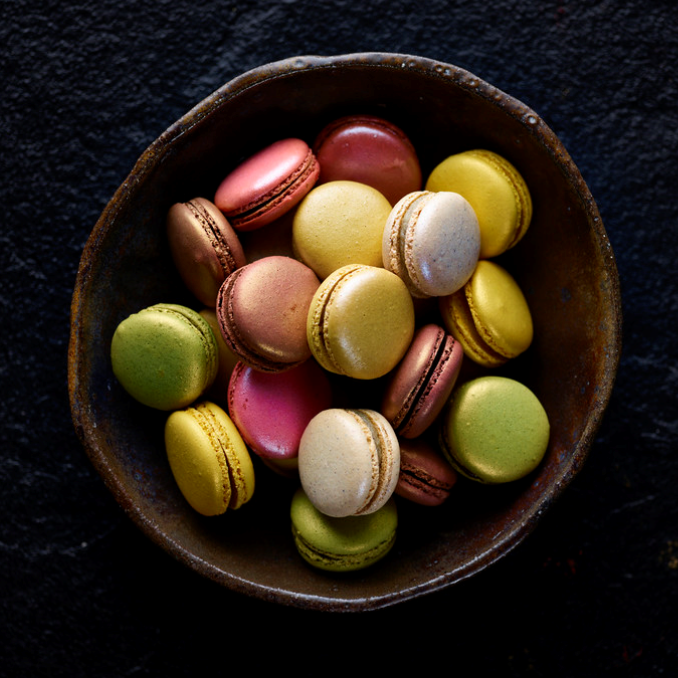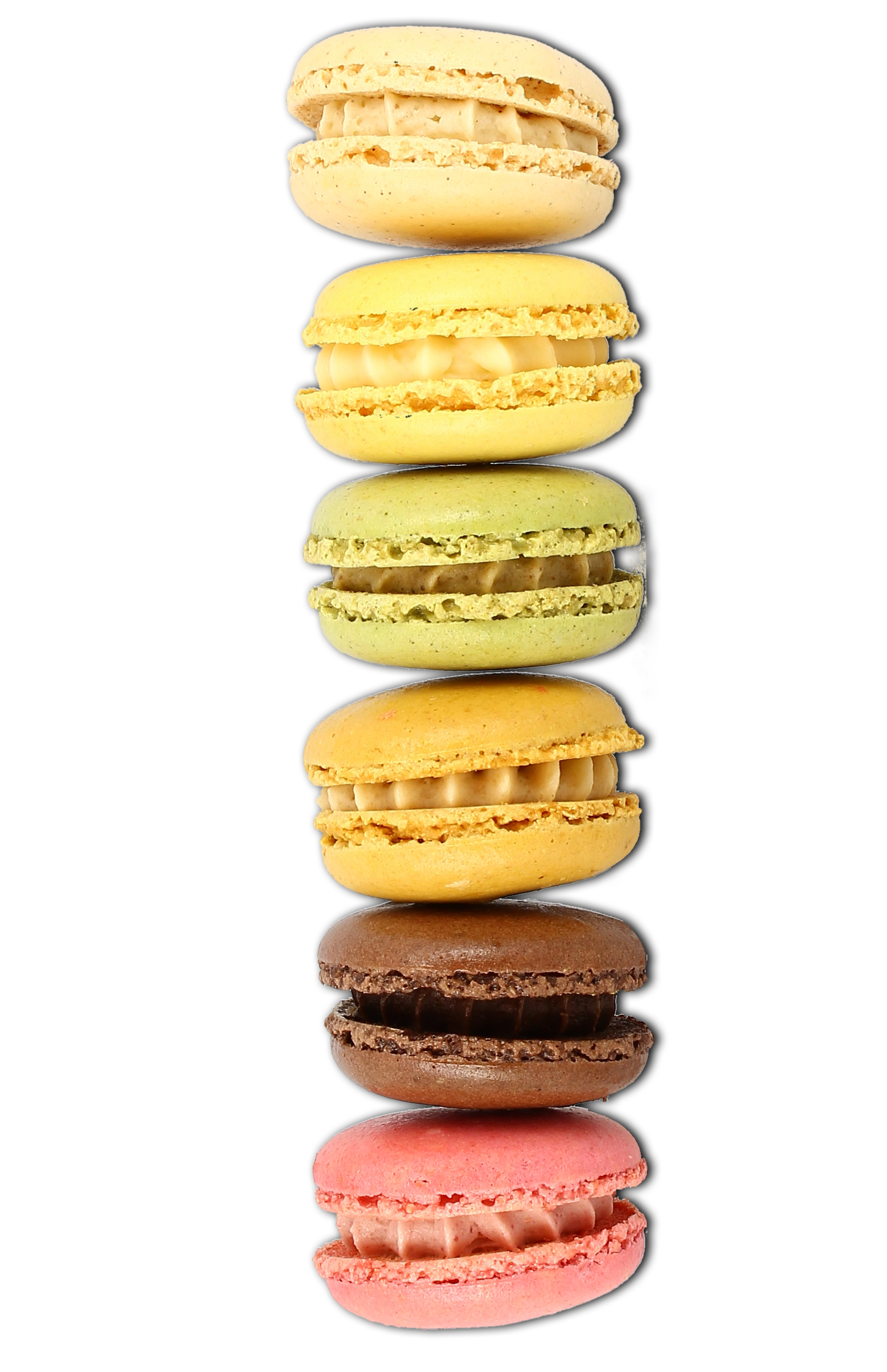MACARONS, QUITE A STORY...
THE ORIGINS
Macarons appeared in Europe in the Middle Ages, first in Italy under the name of "maccheronw". Catherine de' Medici actually served them during at Duke Anne de Joyeuse's wedding feast, in the Ardèche, in 1581. It seems that in Saint-Jean-de-Luz in 1660, a pastry chef presented them to King Louis XIV for his wedding.
In Paris, it was the 'officiers de bouche' (masters of fine dining), the Dalloyau, who served the King macarons in 1682. Today, there are more than 40 regional specialities of macarons.
Macarons are one of the most popular desserts throughout the world. This little round cake is in another class of art and know-how for French pâtisserie. This delicate and colourful treat has a soft filling made of either ganache, cream or jam, and is sandwiched between two shells which are made of almond meringue.
The outside should be crispy, whilst the inside is soft and creamy, enjoying it all in one bite!

THE SECRET OF "PARIS MACARONS"
A one-of-a-kind skill...
The macaron recipe is no secret.
The "Paris" macaron is made up of two round, smooth shells with a filling in the middle which helps these two shells stick together.
The shells are made by beating egg whites to stiff peaks, known as meringues, with an equal mix of almond powder and icing sugar, flavoured and coloured according to the recipe. They are then piped into disks and baked in the oven.
Depending on which macaron recipe is used, after baking, the shells will then be stuck together using either a cream, ganache or jam.
Once the macarons have been made, they are then frozen to make sure they are well-preserved and so that they gain the specific texture that they are known for.
A simple recipe along with an almost infinite amount of potential recipes. The intricacy of creating this challenging pastry lies in how skilfully it is made.
Getting consistent, round and smooth macarons comes from the know-how gained by pastry chefs after many long years of practice.
Let's talk about the "macaronner" (the meringue, sugar and almond mixture). Whilst preparing the batter, the movement is very specific and only having the right hand gestures and having a good eye will the pastry chef be able to get the desired result.
The pastry chef's batter is critical but it is also necessary to master all aspects of production to obtain this delicate mouthful (oven temperature, baking time, moisture, moisture of the fillings, freezing times, etc.).
A long road for just a few grammes of passion...


